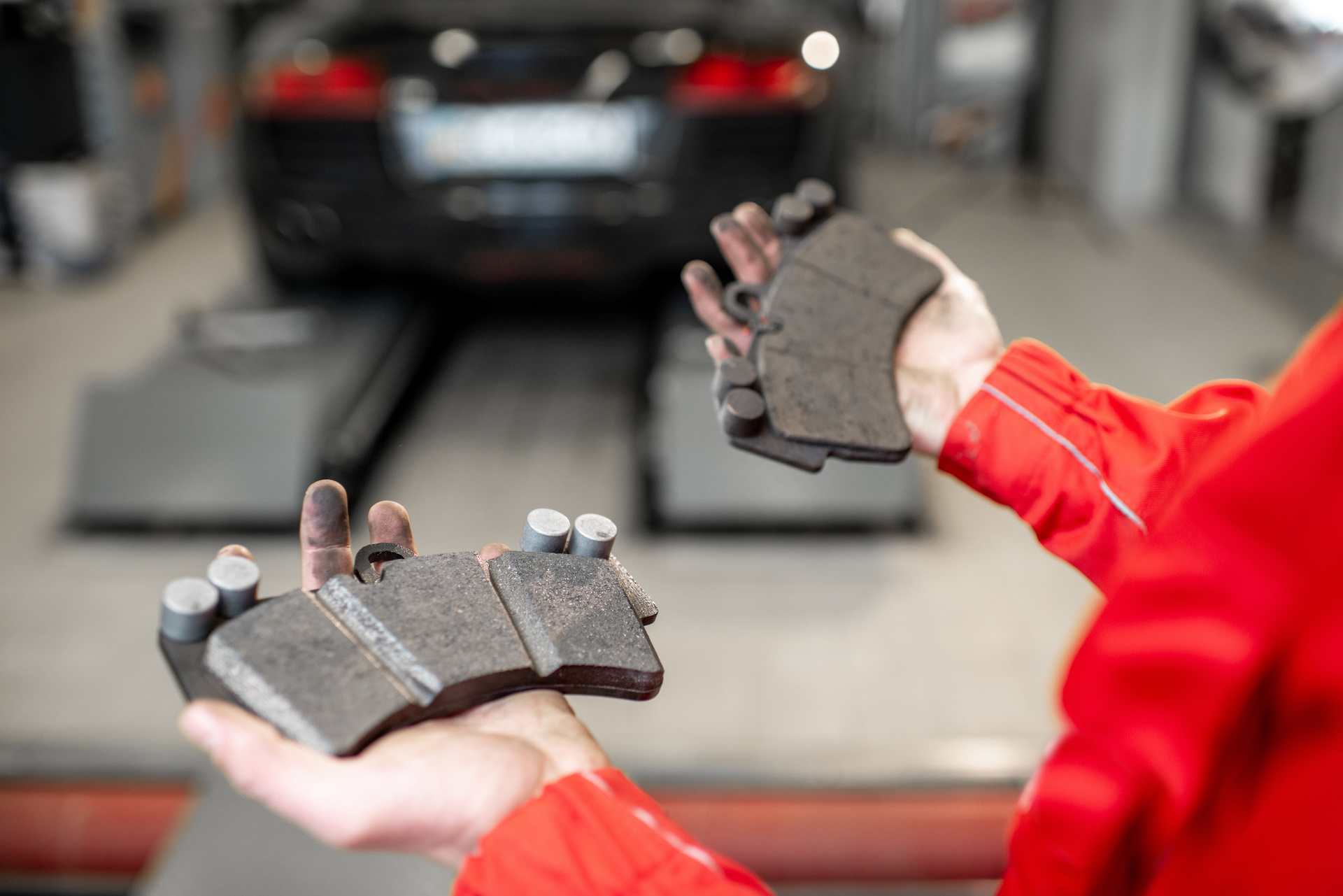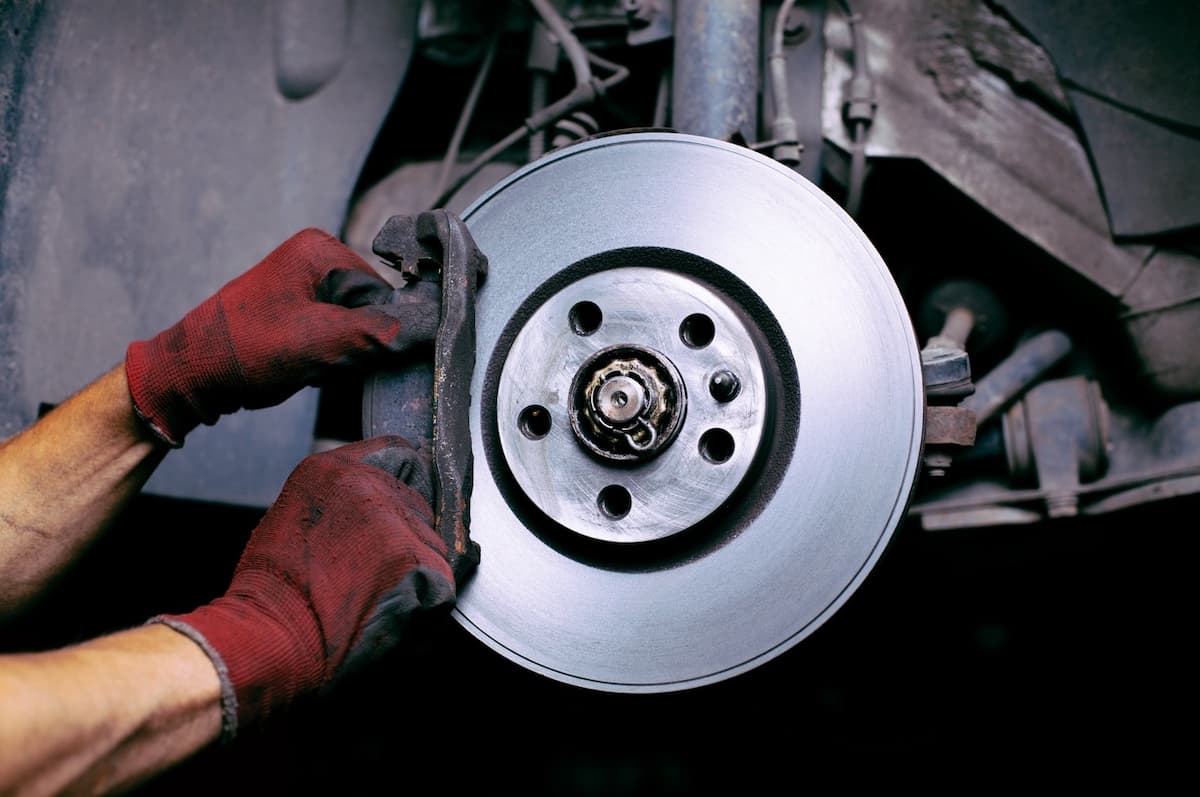Brake pads typically last between 30,000 to 70,000 miles, but the lifespan can vary based on driving habits and environmental conditions. Factors such as frequent stop-and-go driving, heavy braking, or driving in hilly areas can shorten the lifespan of brake pads.
Brake pads are an essential component of your vehicle’s braking system, playing a critical role in ensuring your safety on the road. But like any other car part, brake pads wear out over time and need to be replaced. One of the most common questions drivers have is, “How long do brake pads last?” The answer isn’t straightforward, as it depends on various factors including driving habits, vehicle type, brake pad material, and road conditions.
In this detailed guide, we’ll explore these factors, discuss how to recognize the signs of worn brake pads, and provide tips on how to maximize their lifespan.

Credit: www.kwik-fit.com
Contents
What Are Brake Pads and How Do They Work?
Brake pads are a crucial part of the disc braking system. They consist of a metal backing plate with a friction material bound to the surface. When you press the brake pedal, the calipers squeeze the brake pads against the spinning brake rotors (discs) attached to the wheels. This contact creates friction, which slows down or stops the vehicle.
Brake pads are designed to withstand high levels of heat and friction, but they gradually wear down over time. If they become too thin, they lose their ability to stop the vehicle effectively, which can lead to unsafe driving conditions.
Average Lifespan of Brake Pads
On average, brake pads can last anywhere from 25,000 to 70,000 miles. However, this range is quite broad because several factors can significantly influence their lifespan. Some drivers may need to replace their brake pads after just 20,000 miles, while others might get up to 80,000 miles out of a set. It’s crucial to understand these influencing factors to get a better estimate of how long your brake pads will last.
Factors That Affect Brake Pad Longevity
Several factors can influence the longevity of brake pads, impacting how often they need to be replaced. Understanding these factors can help you manage wear and tear more effectively and extend the life of your brake pads. Here are the primary factors that affect brake pad longevity:
1. Driving Habits
- Aggressive Braking: Frequent hard braking and sudden stops generate more friction and heat, which accelerates the wear of brake pads.
- Highway vs. City Driving: Highway driving typically involves less frequent braking compared to city driving, where you need to stop and start constantly due to traffic signals, pedestrians, and congestion. This can lead to faster wear in city driving conditions.
2. Brake Pad Material
- Organic Brake Pads: Made from materials like glass, rubber, and Kevlar, organic brake pads are softer and provide quieter braking. However, they wear out faster and are typically found in lighter, less powerful vehicles.
- Semi-Metallic Brake Pads: These pads contain metal fibers, making them more durable and better at heat dissipation. They offer improved braking performance but can be noisier and cause more rotor wear.
- Ceramic Brake Pads: Made from ceramic fibers and bonding agents, these pads are the most durable and perform well under a range of conditions. They are often used in high-performance and luxury vehicles but tend to be more expensive.
3. Vehicle Type and Weight
- Heavier vehicles like trucks and SUVs put more strain on brake pads, causing them to wear out faster compared to lighter vehicles like sedans and hatchbacks.
4. Driving Conditions
- Hilly or Mountainous Terrain: Driving in areas with steep inclines requires more frequent braking, leading to faster wear.
- Stop-and-Go Traffic: Constantly stopping and starting in heavy traffic can wear down brake pads more quickly.
5. Quality of Brake Pads
- Higher-quality brake pads, often from reputable brands, tend to last longer and offer better performance compared to cheaper, lower-quality options.

Credit: www.minit-tune.com
Signs of Brake Pads Need Replacement
It’s essential to be aware of the warning signs that indicate your brake pads are nearing the end of their lifespan. Ignoring these signs can lead to reduced braking efficiency and increased safety risks. Common symptoms of worn brake pads include:
- Squealing or Squeaking Noise: This is often the first sign that your brake pads are wearing thin. Many brake pads have built-in wear indicators that produce a high-pitched noise when they contact the rotor.
- Grinding Sound: A grinding noise when braking usually means the brake pads are completely worn down, and the metal backing plate is making contact with the rotor. This can cause significant damage to the rotors and should be addressed immediately.
- Reduced Braking Performance: If you notice it takes longer to stop or the brake pedal feels less responsive, it could be a sign that your brake pads are worn out.
- Vibrations When Braking: Warped rotors or uneven brake pad wear can cause the brake pedal to pulsate or vibrate when applying the brakes.
- Brake Pad Warning Light: Some vehicles have a dashboard warning light that indicates when the brake pads are too thin and need replacement.
- Visual Inspection: You can inspect your brake pads through the wheel spokes. If they appear to be less than 1/4 inch thick, it’s time for a replacement.
How to Extend the Life of the Brake Pads
While brake pad wear is inevitable, there are steps you can take to prolong their lifespan:
- Practice Smooth Braking: Avoid sudden stops and hard braking whenever possible. Gradual braking reduces the amount of friction and heat generated.
- Reduce Speed: High-speed driving increases the energy required to stop, which accelerates brake pad wear. Maintain a moderate speed to reduce braking force.
- Lighten Your Load: Carrying unnecessary weight puts additional strain on your brakes. Remove any excess cargo to reduce the burden on your brake pads.
- Use Engine Braking: In manual and some automatic vehicles, you can downshift to use the engine to slow the car down instead of relying solely on the brakes.
- Maintain a Safe Following Distance: Keeping a safe distance from the vehicle in front of you reduces the need for sudden braking.
- Regular Inspections: Have your brakes inspected regularly, especially before long trips or if you frequently drive in challenging conditions. This can help identify issues before they become serious.
When to Replace the Brake Pads
While mileage is a good indicator, it shouldn’t be the only factor in determining when to replace the brake pads. Pay attention to the symptoms mentioned earlier and consult your vehicle’s owner’s manual for manufacturer recommendations. Generally, it’s best to have your brake pads inspected every 10,000 to 15,000 miles.
The Cost of Replacing Brake Pads
The cost of replacing brake pads can vary widely depending on your vehicle type, the quality of brake pads used, and labor costs in your area. On average, you can expect to pay between $100 and $300 per axle for standard brake pad replacement. High-performance or luxury vehicles with specialized brake systems may incur higher costs, sometimes exceeding $500 per axle.
The Role of Rotors and Other Components
While brake pads are a crucial part of the braking system, they work in conjunction with other components like rotors, calipers, and brake fluid. When replacing brake pads, it’s also essential to inspect the condition of the rotors. If the rotors are warped or too thin, they should be resurfaced or replaced to ensure optimal braking performance. Neglecting the condition of the rotors can lead to uneven brake pad wear and reduced braking efficiency.
Frequently Asked Questions
Here are some FAQs about the lifespan of brake pad –
1. How often should I replace my brake pads?
The general guideline is to replace brake pads every 25,000 to 70,000 miles, depending on driving habits and conditions. However, it’s crucial to monitor the specific symptoms of brake wear and consult your vehicle’s manual for recommendations.
2. Can I replace just the brake pads, or do I need to replace the rotors as well?
It depends on the condition of the rotors. If they are in good condition, with no signs of warping or excessive wear, you can replace just the brake pads. However, if the rotors are damaged or too thin, they should be resurfaced or replaced along with the pads.
3. What happens if I don’t replace my brake pads in time?
Driving with worn brake pads can lead to reduced braking efficiency, longer stopping distances, and potential damage to the rotors. In extreme cases, it can result in brake failure and increase the risk of accidents.
4. Are ceramic brake pads better than other types?
Ceramic brake pads offer several advantages, including longer lifespan, quieter operation, and less dust generation. However, they are typically more expensive and may not be the best choice for heavy-duty or performance applications where semi-metallic pads may perform better.
5. Can I replace my brake pads myself?
If you have the right tools and mechanical knowledge, you can replace brake pads yourself. However, because brakes are a critical safety component, it’s recommended to have a professional handle the replacement if you’re not confident in your ability to do the job correctly.
Conclusion
Based on the information above, we can conclude that the lifespan of brake pads varies depending on several factors such as driving habits, road conditions, and type of brake pads. Generally, brake pads can last from 25,000 to 70,000 miles.
It is essential to have your brake pads checked regularly to ensure that they are in good condition. Neglecting brake pads can lead to more significant problems, compromising the safety of your vehicle and passengers. Replacing brake pads when needed is a necessary investment for your vehicle’s longevity and your peace of mind while driving.